Sibiel and its surroundings
As well as its icon-museum, Sibiel has a rich heritage of the authentic spirit of a typical Transylvanian village. Its geographical position right in the centre of Romania also makes it a useful base from which to visit other areas and places of interest or importance in Transylvania.
An ancient village
Archaeological finds indicate human presence in the Sibiel region since Neolithic times even if some experts date the first village settlements only to the sixth century, a period of constant migration. The citadel, called the Salgo, of which there are extensive ruins on the wooded heights about 1.5 kilometres from present-day Sibiel, is dated by some to the thirteenth or fourteenth centuries. An Hungarian settlement, giving rise to the local tradition that it dates back to the era of the Daci and is the place where King Decebalo hid his treasure, Salgo is first mentioned in a document of 1322. The first explicit documentary reference to Sibiel is in 1384 (or 1384), although some maintain that Salgo and Sibiel are essentially identical.
Monastery and Church of the Holy Trinity
From the sixteenth century, the monastery with its school located about five kilometres from Sibiel in the district of Chilii, played an important religious and cultural role in the village which until the middle of the last century lived from the raising of animals and the cultivation of apples. The monastery was suppressed and destroyed towards the end of the eighteenth century and around the same time the church, dedicated to the Holy Trinity, was built in Sibiel. Begun in 1765, it was decorated with frescoes in 1774-1775 by two popular painters, the brothers Stan and Iacob di Răşinari. Their work was once more brought to light – and public admiraiton - during the restoration works by specialists commissioned in 1964-1965 by Fr Zosim Oancea himself after his arrival at Sibiel. Fr Zosim had suspected the existence of the frescoes under five layers of whitewash on a wall completely blackened by the smoke of votive candles. The church has a single nave with a semi-circular apse and frescoes depicting, along with typically Byzantine biblical and liturgical scenes, unusual Western motifs such as reprsentations of Popes. Today, the church at Sibiel is a national monument.
Laneways and votive shrines
In the silence of its cobbled laneways, accompanied only by the murmer of the more or less fragrant stream, the Sighiel, from which it gets its name, Sibiel with its typical small houses with their luminous courtyards, its fescoed votive shrines from the early nineteenth century, its school and village Cultural Centre (Căminul Cultural) still offers today, a glimpse of tradition and local culture. Orchards and green fields, wooded hills penetrated by footpaths, crown Sibiel's most important treasure: the museum of icons on glass and the spirit of the people who, along with Fr Zosim Oancea, created it.
6 September, 2009: Golden Apple trophy for Mǎrginimea Sibiului and Sibiel
On 6^th September, 2009, the area in which Sibiel is situated – the
so-called Mǎrginimea Sibiului – was awared the 'Golden Apple' trophy.
This recognition, considered as a kind of Oscar for tourism, is awarded
annually by the International Federation of Tourist Journalists and
Writers (FIJET) to a place or a person which or who has distinguished
itself or themselves in the development of tourism in their own country.
The landscape, the hospitality of the people and the long tradition of
farmhouse hospitality in Sibiel explain the award of this prize. The
award ceremony was attended by the Romanian Minister for Tourism, Elena
Udrea, by the local authorities and by officials of FIJET.
From Sibiel to Sibiu, Sighişoara and beyond
It is not possible to indicate even summarily the many places of interest that can be easily reached within about an hour's drive from Sibiel. From the adjacent and splendid city of Sibiu to the neighbouring cities and villages of Cristian, Cisnadie, Cisnădioara, Răşinari (native village of the philosopher Emil Cioran), to the slightly more distant centres of Sămbata de Sus, Mediaş, Sighişoara, Premjer, Biertan to the closeby Ocna Sibiului (thermal spring), the surroundings of Sibiel offer an extraordinary panorama of the cultural heritage of the three historic peoples – Romanians, Germans and Hungarians – who lived together in this region, starting from the magnificent citadels and fortified churches of German origin which are widespread in this area.
TOP |
 |
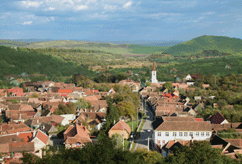
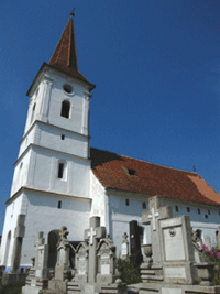
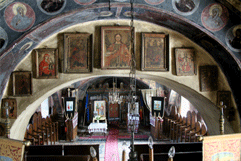 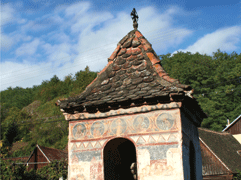 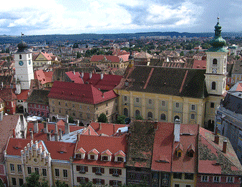
|

